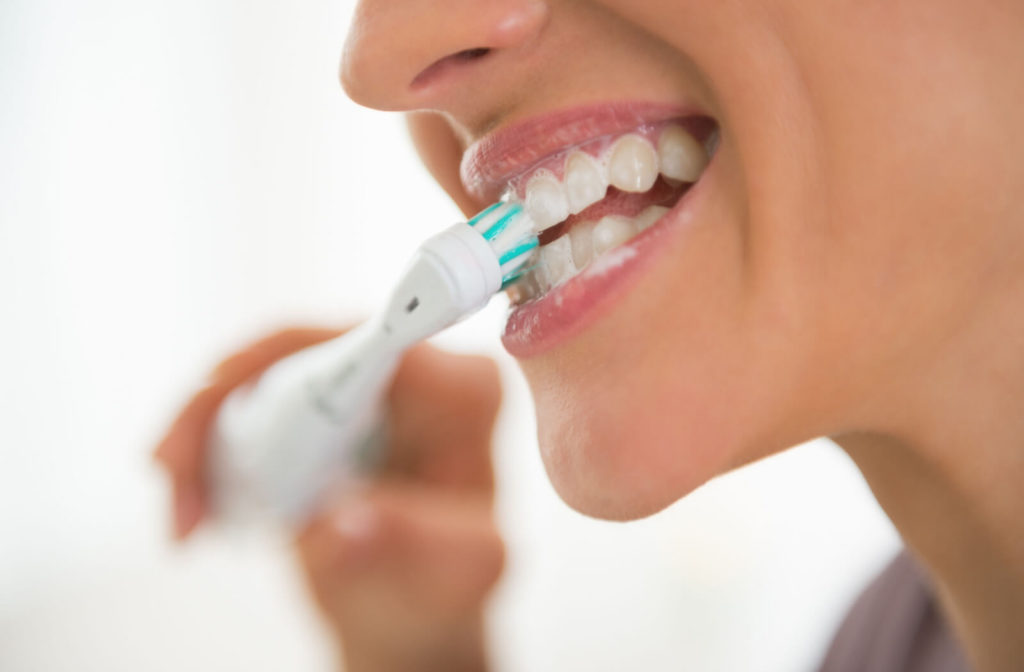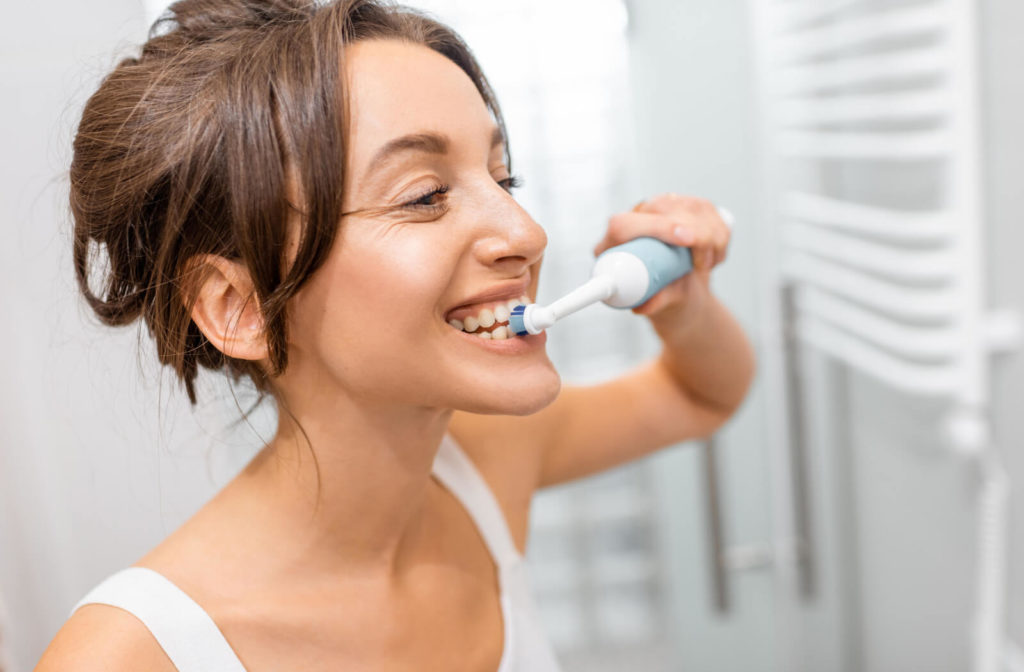Sometimes we don’t think about the things we do every day. While on autopilot, we go through the movements, brush our teeth after each meal, and don’t give it any thought.
However, if you’ve been thinking about booking your next dental cleaning appointment and are wondering if you’ve been brushing your teeth correctly, then this refresher may be just what you need.
Electric and manual toothbrushes are both effective at cleaning our teeth as long as you use them correctly. Brush your teeth for a full 2 minutes, including the fronts and backs of your teeth, and make sure you don’t forget about those hard-to-reach teeth at the back of your mouth.
Unfortunately, many people don’t brush for the full 2 minutes, and they often miss some of their teeth. This is where an electric toothbrush comes in handy, especially if you want to keep cavities at bay.
Benefits of an Electric Toothbrush
Electric toothbrushes offer a few benefits over manual toothbrushes:
- We brush with manual toothbrushes at a rate of about 300 strokes per minute. Most rechargeable electric toothbrushes operate at 5,000–30,000 strokes per minute, so it takes less time to do a more thorough job.
- Electric toothbrushes are less abrasive but more thorough than manual toothbrushes. As a result, you can remove more plaque with less effort.
How to Brush with an Electric Toothbrush
So, how do you brush your teeth properly with an electric toothbrush? It’s a little more precise than most people are used to, but once you get the hang of it, it’ll be second nature in no time.
Make Sure It’s Charged
You won’t be able to use an electric toothbrush if it’s not charged! Keep the toothbrush cradled in its charger to ensure that you can always use it to its full potential. If your battery dies, you can brush your teeth manually or use a regular toothbrush if you have one.
Store your toothbrush close to the sink so it’s easy to reach but far enough away that it’s not in your way.
4 Quadrants
Imagine you split your teeth into 4 quadrants:
- Top right
- Top left
- Bottom left
- Bottom right
Brush each section for 30 seconds for a total of 2 minutes. If your electric brush has a timer, that’s even better because you’ll get a thorough and even clean every time.
Most rechargeable electric toothbrushes have 2-minute timers built in. Some even have professional timers that divide time into 30 seconds to help you keep track of each quadrant.
You can brush a little longer than 2 minutes to clean under your tongue and scrape your tongue and the roof of your mouth.

Positioning
Proper form is incredibly important for effective brushing. Brush the tooth perpendicular to the gum line. Rock back and forth between the teeth with the bristles on the side farthest from the handle, and try to brush with the curvature of the teeth. This is one of the most effective ways to get rid of plaque and food particles.
Brush each tooth on the outside for a few seconds at a time. There’s no need to scrub or press hard; the electric toothbrush will do all the work for you. Some brands may even buzz at you if you apply too much pressure.
Repeat
Continue to the next tooth, holding for a few seconds until you’ve brushed the entire quadrant. Brush the top, inside, and back of your teeth after you’ve finished the outside surfaces.
Repeat with the remaining 3 quadrants, ensuring that you spend at least 30 seconds on each section.
Bonus Tip
Don’t turn the brush on until it’s inside your mouth; otherwise, toothpaste will get everywhere!
Common Brushing Mistakes
One of the most common mistakes many people make is moving the brush head around too much. You randomly brush the bottom teeth first, then the top right biting surfaces, then accidentally the bottom teeth again, and finally the front teeth.
Even if it feels like you’re getting all areas of your mouth, this is an inefficient strategy, and you’d be surprised how much you’re really missing. Brushing should be done methodically so each tooth receives the same amount of time with the brush.
Maintaining Good Oral Hygiene
Of course, brushing alone isn’t enough; keep a healthy hygiene routine going by flossing. We recommend flossing at least once a day to help remove plaque and food particles from between your teeth that brushing alone can’t reach.And make sure you have your teeth cleaned often! The general rule is that you should see the dentist every 6 months, and those with dental problems should have their teeth checked every 3 or 4 months. Schedule a regular dental exam and cleaning with Shawnessy Dental Centre to ensure your oral hygiene is at its best!


